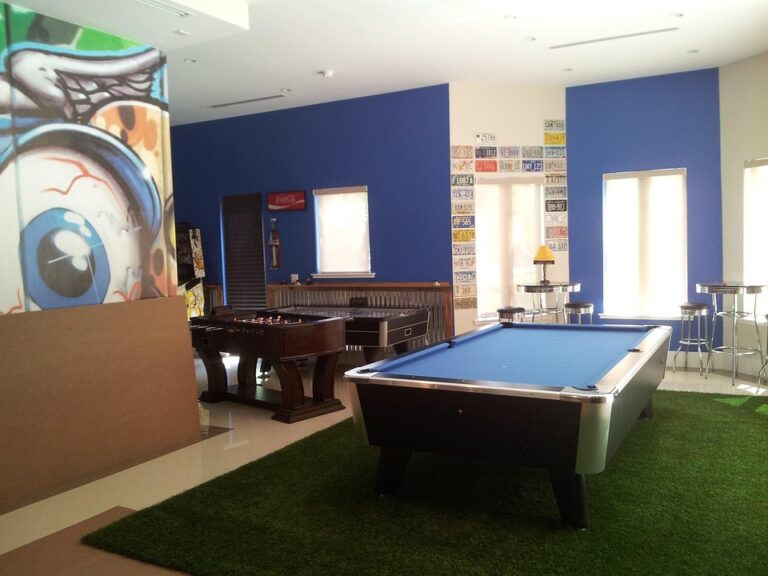Building Worlds Together: The Art of Co-creation in Multiplayer Games
The evolution of multiplayer games has transformed the video game industry, evolving from simple competitive arenas to complex virtual worlds where players collaborate, compete, and actively contribute to the game’s ecosystem. This article explores the art of co-creation in multiplayer game development, highlighting key trends, collaborative techniques, and the impact of community engagement.
Understanding Co-creation in Multiplayer Games
Co-creation in multiplayer games refers to a collaborative process where developers and players work together to shape the gaming experience. This method not only enhances game quality but also fosters a strong sense of community among players. An estimated 75% of gamers believe that they play a significant role in shaping the games they immerse themselves in, according to a 2022 survey by the International Game Developers Association (IGDA).
The Rise of User-Generated Content
User-generated content (UGC) is a hallmark of modern multiplayer games. Platforms like Roblox and Minecraft allow players to create their own worlds, levels, and experiences, thus expanding the game’s universe. A report from Newzoo indicates that nearly 50% of gamers have engaged with UGC, making it a pivotal aspect of the gaming landscape.
Example: Take the popular multiplayer game Fortnite. Not only does it offer engaging gameplay, but it also allows players to create and share custom maps through its Creative mode. This UGC fosters a dynamic environment where creativity fuels exploration and engagement, providing endless possibilities for players to discover and enjoy.
Game Development: The Co-creation Process
Creating a multiplayer game requires developers to engage in an iterative process that balances their vision with player feedback. Here’s how successful game developers incorporate co-creation into their projects:
1. Early Access and Beta Testing
Many game developers opt for early access or beta testing phases to gather feedback from their community. This approach allows developers to identify issues, refine mechanics, and understand player preferences before a full launch. By inviting players to contribute to the game in its formative stages, developers can create a product that resonates with their audience.
2. Community Engagement
Building a responsive community is essential for the success of multiplayer games. Platforms like Discord and forums provide spaces for players and developers to communicate, share ideas, and discuss challenges. Engaging with the community helps developers identify trends, preferences, and potential features that could enhance the game experience.
3. Incorporating Player Feedback
Developers who actively listen to player feedback can cultivate a loyal player base. For instance, the multiplayer game Apex Legends has a dedicated subreddit where players share insights and suggestions. Respawn Entertainment, the game’s developer, uses this feedback to implement features, balance gameplay, and release updates that reflect player desires.
The Impact of Co-creation on Game Longevity
Co-creation can significantly prolong the life of multiplayer games. By fostering a collaborative environment, developers can continuously evolve their games based on player interest and engagement. Successful titles, such as League of Legends, frequently adjust their balance and introduce new characters based on community feedback, ensuring that players remain invested in the game.
Why Co-creation Works
The collaborative nature of multiplayer games allows players to feel a sense of ownership over their experiences. This emotional investment encourages regular play and boosts community interactions. In fact, according to a report by Statista, player engagement in co-created content increases by 60%, underscoring how vital this approach is to game success.
Challenges in Co-creation
Despite its benefits, co-creation in game development is not without challenges. Developers must navigate the complexities of balancing diverse player expectations while maintaining their original vision. Furthermore, handling toxic behavior or feedback can sometimes distract from constructive community contributions.
Strategies for Managing Challenges
- Clear Communication: Developers should provide clear guidelines about what kind of feedback is valuable to the co-creation process.
- Moderation Policies: Establishing strong community moderation can help maintain a positive atmosphere where constructive feedback thrives.
Conclusion: Building the Future of Multiplayer Games Together
The art of co-creation in multiplayer games is reshaping how developers approach game design. Engaging with players early in the process, incorporating their feedback, and creating robust communities are essential elements for lasting success. As the gaming landscape continues to evolve, the future of multiplayer games will undoubtedly be built by developers and players working together.
By embracing the principles of co-creation, developers can craft immersive experiences that resonate deeply with their audiences, ensuring both enjoyment and community growth.
For more insights on game development and community engagement, check out our articles on The Future of Gaming Communities and Designing Engaging Multiplayer Experiences.
References:
Images Suggestions:
- Image 1: A screenshot of a collaborative game environment in Fortnite. (Alt text: Multiplayer Games collaborative environment in Fortnite)
- Image 2: Players interacting in a game development community forum. (Alt text: Multiplayer Games community engagement in game development)
By applying these principles, the gaming industry can continue to evolve, advancing the artistic craft of co-creation while catering to player desires and fostering a vibrant gaming culture.


